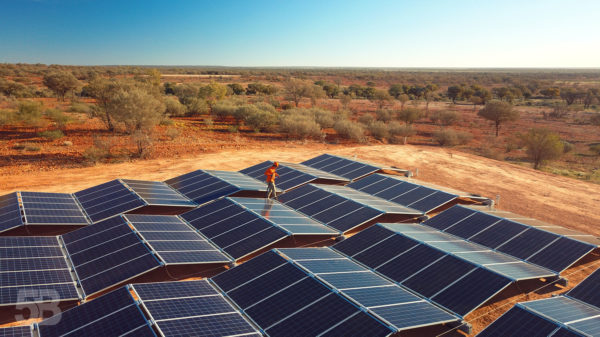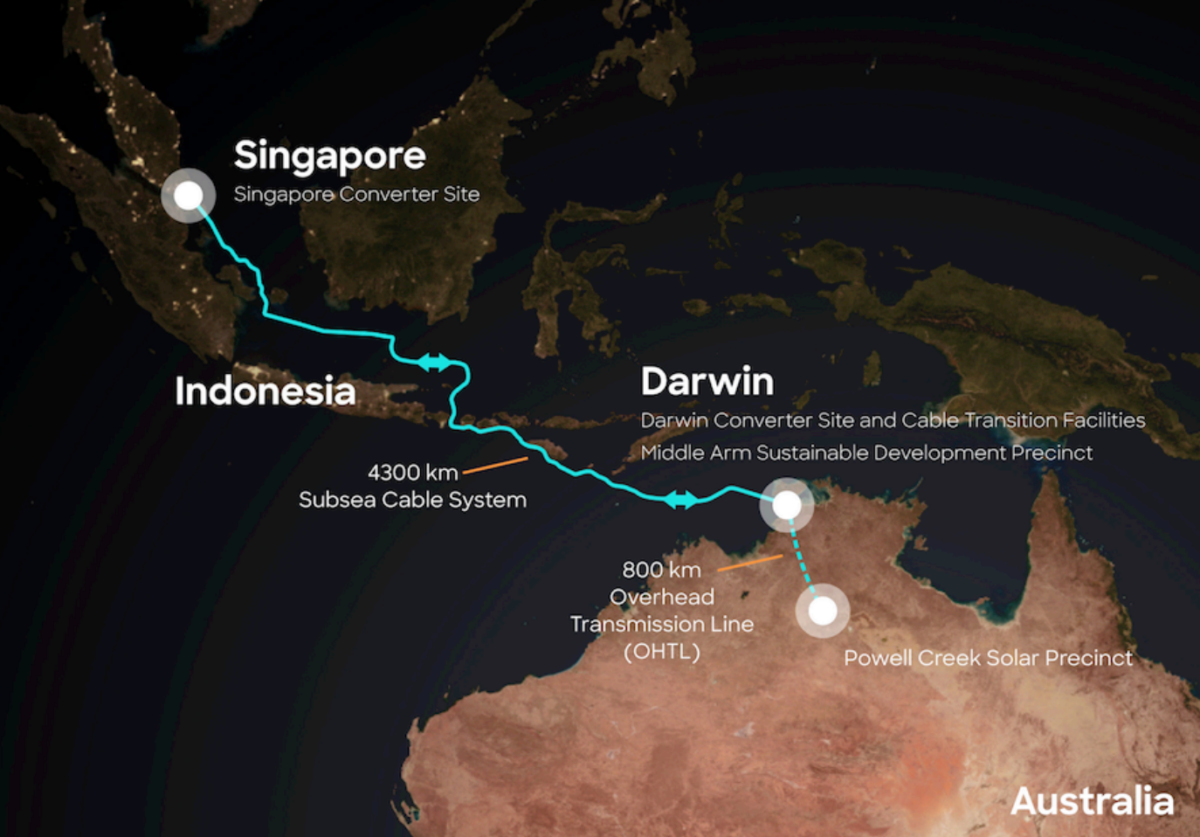Under new ownership, SunCable is planning to flood Darwin with ~4 GW of solar energy. The company is also looking to move forward with its projects, including the subsea cables between Darwin and Singapore, but at a significantly more modest scale, at least initially.
In a statement, SunCable said its ambition is to now deliver just ~6 GW of firmed renewable energy in multiple stages, beginning with delivering “at least” 900 MW of green power to Darwin and 1.75 GW to Singapore.
To realise this, the company will be split into a domestic Australian division, to be overseen by Quinbrook Infrastructure Partners – Australian founded investment company which also holds a stake in the project.
Meanwhile, the international division will continue working on the Australia-Asia Power Link (AAPowerLink) proposal to build a high voltage (HV) subsea cable between Darwin and Singapore. To that end, the company will lodge its submission to the Singaporean Energy Market Authority to gain the energy import conditional licence later this month.
If SunCable is able to deliver this first stage, it will move forward with its original megaproject proposal to build up to 20 GW of solar near Powell Creek in the NT.

Image: 5B
SunCable went into administration earlier this year following a fallout between its two key billionaire investors, Mike Canon-Brookes and Andrew Forrest. Its buyout was completed today from a consortium led by Cannon-Brookes’ Grok Ventures. In terms of Quinbrook’s role in SunCable, the company said: “Quinbrook is providing a range of development services to Grok and SunCable including prospective customer engagement, project construction and operations and has rights to make a substantial equity investment into the onshore projects.”
New components for SunCable have also been flagged, including that the company plans to establish an advanced HV subsea cable manufacturing and testing facility, with AAPowerLink as an anchor customer. “SunCable is in discussions with established global subsea cable manufacturers to jointly develop, construct and operate this facility,” it said in a statement.
Beyond this, SunCable’s eventual plan now involves flooding Darwin with green energy, with the company flagging it wants to deliver an additional 3 GW of renewable electricity for customers in Darwin, representing nearly ~4 GW in total.
These figures are vastly more than the Territory’s demand and current grid capacity. That is, the project is banking on supplying a yet-to-be established green manufacturing industry, excitement over which has swept through Australia in the last year. This includes supplying the Middle Arm Sustainable Development Precinct in Darwin, where vanadium hopeful Tivan is seeking to establish itself.
“The availability of competitively priced, 24/7 renewable electricity offers the opportunity to underpin a new wave of green industrial development in the region, supporting local jobs and the growth of sustainable new industries which could include hydrogen electrolysis, critical minerals processing, e-fuels and green data centres,” the SunCable statement says.
The company is planning to draw on large institutional investors to fund its projects, with Grok Ventures CEO Jeremy Kwong-Law commenting: “Once all milestones are reached and we reach financial investment decision (FID), we have a high conviction that large institutional investors and debt providers will fund the capital expenditure to construct the project.”
As the company noted, “the Australia-Asia Power Link is SunCable’s flagship project and encompasses five key infrastructure components:
1. Solar precinct: solar precinct in the Northern Territory with capacity of up to 20 GW
2. Overhead transmission line: ~800km HVDC overhead transmission line (OHTL) from the
solar precinct to Murrumujuk (NE Darwin)
3. Darwin converter site: terminal location for the OHTL and converts electricity from HVDC
to HVAC for connection to Darwin, before being converted back to HVDC for
transmission to Singapore
4. HVDC subsea cable system: approximately 4,300km in length from Darwin converter site
to Singapore
5. Singapore converter site: The HVDC power is converted via a Voltage Source Converter
(VSC) to connect to the local network.”
This content is protected by copyright and may not be reused. If you want to cooperate with us and would like to reuse some of our content, please contact: editors@pv-magazine.com.









By submitting this form you agree to pv magazine using your data for the purposes of publishing your comment.
Your personal data will only be disclosed or otherwise transmitted to third parties for the purposes of spam filtering or if this is necessary for technical maintenance of the website. Any other transfer to third parties will not take place unless this is justified on the basis of applicable data protection regulations or if pv magazine is legally obliged to do so.
You may revoke this consent at any time with effect for the future, in which case your personal data will be deleted immediately. Otherwise, your data will be deleted if pv magazine has processed your request or the purpose of data storage is fulfilled.
Further information on data privacy can be found in our Data Protection Policy.